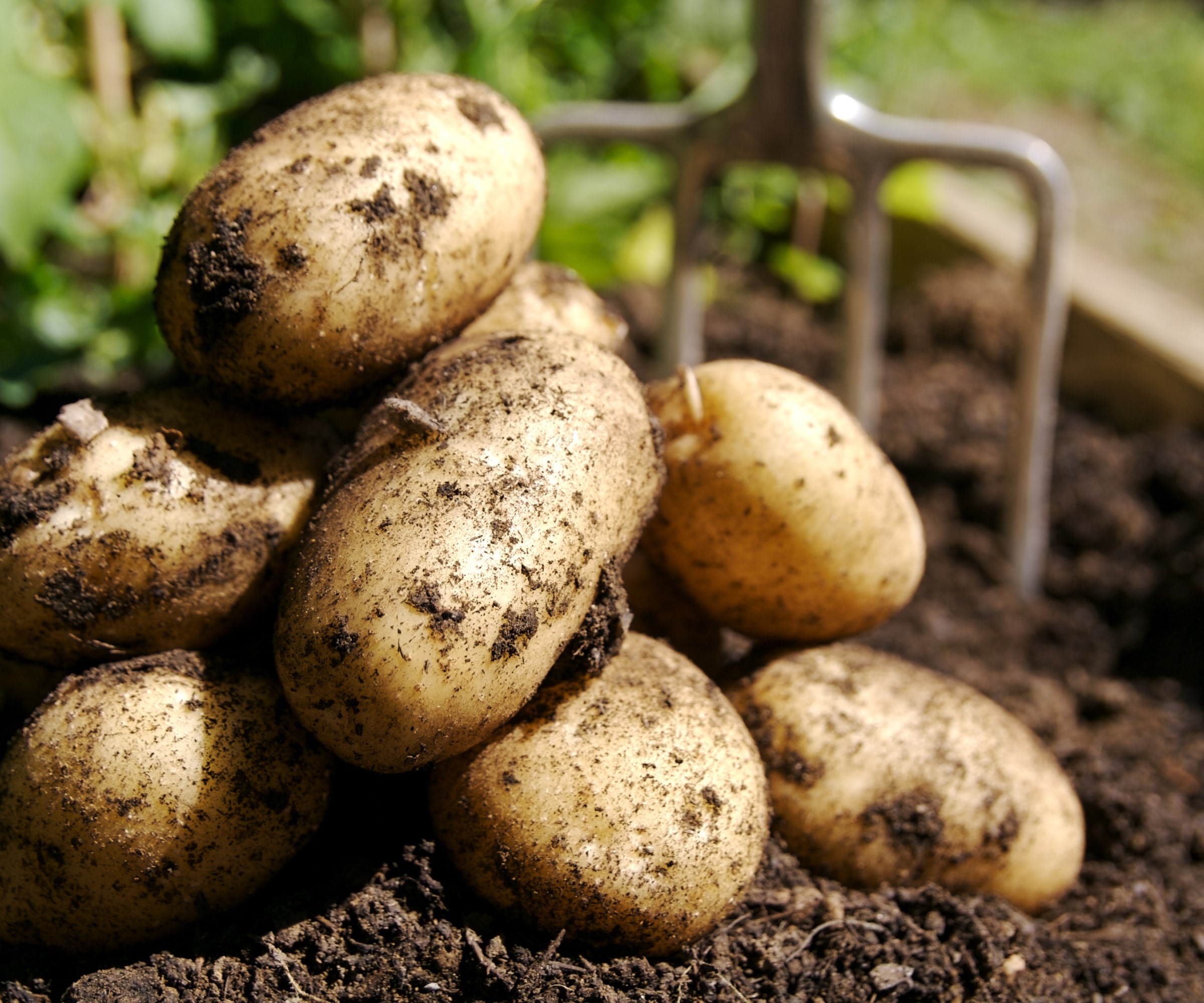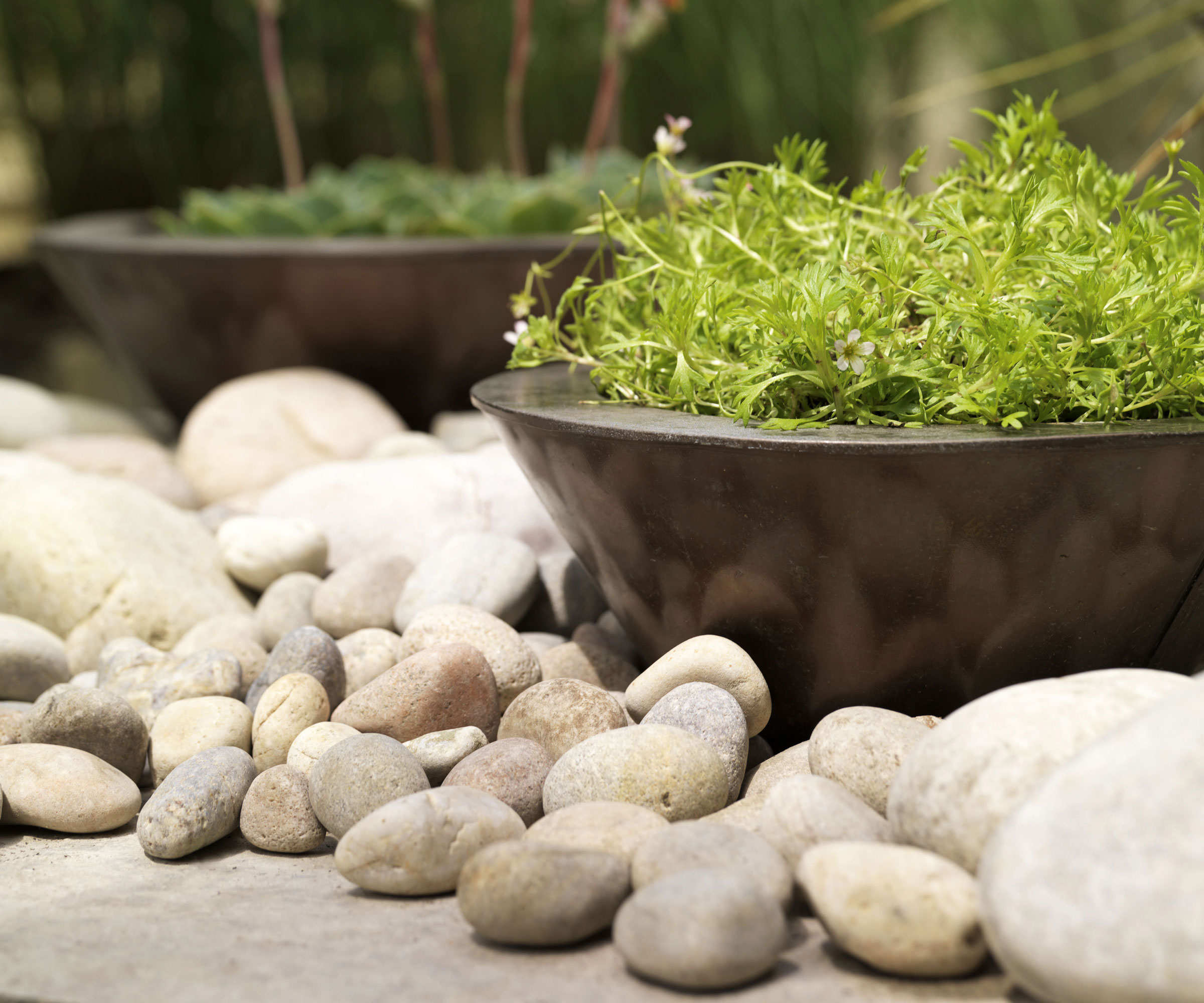
If you have ever taken a floral design class, chances are you will have come across floral foam. Often in the form of a lightweight green brick, once soaked in water it acts as a foundation in which to create a vast range of different designs, and it serves as a water source for your blooms. Unfortunately, it is also incredibly harmful to the environment.
I trained as a florist eight years ago at a prestigious London flower school, and I was taught how to arrange into foam. The environmental issues were not discussed, even such a short time ago. Since then, however, there has been a monumental shift in awareness about the environmental pitfalls that come with using floral foam, and a big movement towards more sustainable floristry practices. Just search #nofloralfoam on Instagram and you'll see what I mean.
Ever since I discovered how harmful floral foam can be, I’ve made it my mission to only use sustainable floral foam alternatives that can be reused time and again. If you're interested in eco-friendly garden ideas, these are bound to appeal to you, too.

What is wrong with using floral foam?
We don’t actually know what goes into floral foam because the ingredients are not printed on the packaging or found anywhere on the internet. What we do know is that floral foam does not biodegrade, is not reusable, and contains microplastics. When it is disposed of, these microplastics can and do get into the water supply and the air.
From personal experience, I know breathing in microparticles of dust that fly into the air when handling dry floral foam can cause coughing and aggravate breathing issues. The UK’s Royal Horticultural Society no longer allows it to be used at any of its major flower shows, and the Slow Flowers Society in the US also advocates for alternatives.
Of course, when the high society florists of Constance Spry’s era in the 1920s and 30s began creating beautiful table centers and urn arrangements, floral foam had not been invented. It was patented in the 1950s and became attractive to florists because it was so easy to use and inexpensive. Before this, chicken wire, water and moss were commonly used to keep floral designs hydrated and to provide structure for flower stems, and we can learn much from these designers of the past when it comes to sustainable mechanics.
It is much safer for you and the planet to use eco-friendly floral foam alternatives. Each one of these 12 options provides equally good structure for a design, and can either be reused or composted afterwards.
1. Chicken wire

Chicken wire, available from Amazon, is an inexpensive and easy way of creating a structure for your flower and foliage stems within any vessel, provided it is watertight.
The idea is to create a pillow form out of a flat piece of chicken wire, by bending it back on itself a couple of times. This will give you multiple layers and a 3D grid within which to design. The chicken wire pillow should be snug inside your choice of vase or vessel, and ideally, it should sit half an inch higher than the lip of your vase. Secure it with some floristry pot tape - I use this one, available on Amazon, over the top to ensure it doesn't move, and simply fill your vase with water.
The great thing about these grids is they can be used time and again, just dry them off each time they are used to prevent rusting.
There are different gauges and sizes of chicken wire available - I find it more efficient to use the smaller grids, in fact, this hardware cloth wire roll from Amazon would be absolutely ideal for the job.
2. Moss

For me, there is nothing better than using a natural material as a base for a design, and moss is so versatile.
You can use it within vases - even glass ones - to create structure. It can form the base of a Christmas wreath or a funeral tribute, and you can even encase it in cylinders of chicken wire to create what we fondly call 'mossages' in the floristry business, to use for creating large-scale installations.
You can use any type of moss, but my preference is to use sphagnum moss, available from Walmart. It retains water extremely well, so all you need to do is soak it before use and it will keep your stems fully hydrated.
3. Flower frogs or kenzans

In the Japanese floral art form of Ikebana, kenzans - also commonly referred to flower frogs or pin frogs - are an essential tool for creating beautiful, structural floral designs.
They are usually made of metal, and consist of a heavy base with a grid of sharp needles that resemble tiny sword blades. You simply have to secure the it into the base of your vessel using a strong putty - I use floral clay, available from Amazon - then you place your stems into the pins to create your design.
Kenzans come in a huge variety of sizes, from tiny half-inch ones through to plate-sized pins. If you've never used one before, I would recommend practicing with different sized flower frogs; this set from Amazon would be ideal for getting started.
4. Straw

Although straw would be ineffective in arrangements that require water, it does form an ideal base for some designs, such as Christmas and fall wreaths.
The advantages to straw are it is much lighter than moss, meaning less weight on your front door. Plus it stays dry, so if you are creating a seasonal table center design no moisture will harm your dining table.
It's also super low cost, and you can also use hot glue on it if creating a design with dried or faux flowers.
5. Flower tubes
Flower water tubes are really handy to know about, especially if you want to create a larger flower arrangement.
They are clear, plastic tubes with removable silicone lids, and usually come in packs of 100, such as these flower tubes from Walmart. They are available in different lengths and widths, so check the product information if ordering online.
All you do is fill them with water, put the lid back on and place the flower stem that you want to keep hydrated through the hole in the lid to give the stem its own individual water source. They can be washed and re-used time and again for all kinds of floristry projects.
6. Vessels with built-in grids

Often when you look in vintage ceramic vessels that are designed especially for holding flowers, they will contain an in-built metal grid to help keep your flower stems in place. They are usually removable, and therefore washable, and help enormously when arranging into a somewhat tricky shape.
These might be more difficult to get hold of, but they do exist. Wedgewood and Dartmouth Pottery are two of the brands I look out for all the time. I suggest keeping an eye out in thrift stores or on sites such as Etsy and Ebay to see if any come up.
7. Oshun Pouch
The Oshun Pouch is a relatively new invention, created by Kirsten VanDijk of New Age Floral. Her mission is to promote and pioneer sustainable, eco-conscious products for the floristry industry.
In doing so, Kirsten has invented the Oshun Pouch, a 100% sustainable, biodegradable, and home-compostable pouch, that expands when hydrated. Once so, you place your stems into the pouch and arrange them as desired. It's recommended to keep the pouch hydrated by topping up the water in your vessel on a daily basis.
I have never arranged into an Oshun Pouch before, so I cannot vouch for its ease of use. However, as a zero-waste floristry product, I am super keen to try it.
8. A potato

Ok, bear with me on this one, because it really does work. You can use a potato to arrange flowers into because potatoes hold a lot of water, and they have a very sturdy structure.
A potato works especially well if you're creating a winter or festive flower display, as strong, evergreen foliage will hold up well. You can slice the back off it if you're planning to hang it on your door, too.
To arrange into a potato, first make a hole for your stem using a wooden or metal skewer. It will be much easier than trying to push your flower stems into it directly, which will most likely cause it to break. If you are using this method with fresh flowers, you might need to select ones with strong, woodier stems rather than hollow ones, as they will last longer.
It is, of course, fully compostable, and so easy to use. You could also do the same in summer with a watermelon!
9. Agra Wool
Agra Wool is a branded product made from biodegradable basalt mineral rock fibers. It is similar to floral foam in shape and the way it is used. You cut the blocks to the required size, then soak in water before placing your flower stems into the Agra Wool.
I have used this on professional jobs and personally have found it hard to get on with. It's difficult to get certain stems into the material, and ideally, you are meant to push your stem all the way through the material, rather than simply insert a small section, as you would with foam, which can be tricky.
However, it is compostable, and so if you are looking for really similar floral foam alternatives this might be the product for you.
You can find Agra Wool blocks available on Amazon.
10. Pebbles

Pebbles or decorative rocks, such as these from Walmart, make a beautifully attractive alternative to floral foam, and can even form part of a design if on show.
When placed in a vessel they form a strong and sturdy structure, capable of holding up multiple heavy flower stems.
In my experience, combining pebbles with chicken wire or twigs is a great idea to give a little bit of additional support.
11. Willow twigs

Sustainably foraged willow twigs are a wonderful, natural way to create structure within a bowl or urn. You can use any kind of twigs, but I find willow, hazel and beech to be very effective as they will bend into place but won't snap.
I have used twig bases within a compostable bamboo bowl to make eco-friendly funeral tributes, and it works well in creating a foundation. The result is a very natural-looking arrangement, with lots of wild movement.
12. Pot tape
By using floristry pot tape you can fix a simple grid pattern over the top of a wide vase, to instantly create a structure. Floristry pot tape, available from Amazon or a local craft store, is reinforced, making it super strong and durable.
The only downside to pot tape is it doesn't tend to be reusable, and it isn't a compostable material, so would need to be disposed of in regular household waste.
Aside from the vital environmental benefits, what I love about using more sustainable floristry techniques instead of floral foam is that the end result always looks more natural. Your stems will benefit from much greater movement, and you can create some really elegant, professional-grade designs with these methods. For more inspiration on making your cut flower arrangements look professional at home, you might like our pick of the best vases to suit your style.







